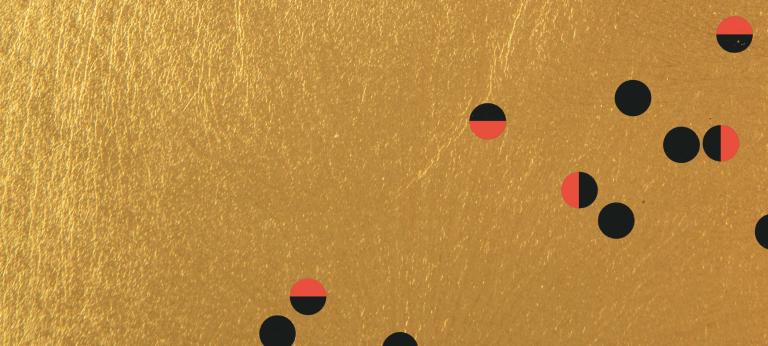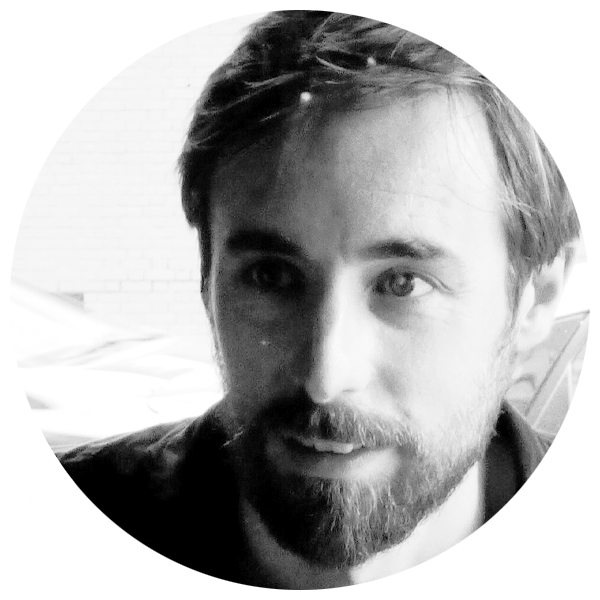Thinking in decades
![{[downloads[language].preview]}](https://www.rolandberger.com/publications/publication_image/ta44_cover_download_preview.jpg)
The latest edition of Think:Act Magazine explores enduring business themes from past decades through a new lens of pertinence for the next 20 years.


by Geoff Poulton
Illustrations by Jan Robert Dünnweller
An innovative leadership model, and a novel product, has put a new sports brand on the front foot to take on the sneaker kings. What did On do differently to get in the running? And what can others learn from its success?
It all started with a simple piece of garden hose. Plagued by injuries, professional triathlete Olivier Bernhard was looking to rekindle a childlike feeling of freedom in his running. While experimenting, he glued pieces of hose to the bottom of a pair of running shoes, instantly creating a softer landing and springboard-like feel when pushing off.

The first On prototype was born. Bernhard pitched the idea to Nike, his sponsor at the time, but after a polite "no," he turned to his former agent, Caspar Coppetti, and David Allemann, who were working as marketing executives. Convinced they had a unique, marketable product, the three set up On. In just over a decade, the firm has gone from unknown Swiss startup to publicly listed global operation and one of the world’s hottest sportswear brands, with tennis legend Roger Federer now an investor and partner.
According to Alyson Meister, an IMD Business School professor of leadership and organizational behavior, On's success since it started operations about 15 years ago is very heavily tied to the company's unique culture. "On has an unrelenting focus on cultivating a culture of autonomy, accountability and collaboration. It empowers its employees to act with entrepreneurial spirit, fostering a sense of ownership and creativity that permeates all levels of the organization," she says.
On's three co-founders now run the company together with two co-CEOs, an unusual management structure, but one they believe allows greater bandwidth and better decision-making. "The co-CEOs, along with the founders, play an active role in maintaining and communicating the company's values and mission," says Meister, who has conducted in-depth research into On's operations. "This leadership model, which initially faced skepticism, has proven to be a significant asset by combining complementary skills and fostering mutual respect and success."
Caspar Coppetti is the co-founder and current executive co-chairman of On. Prior to founding On, Coppetti was a managing partner and chief strategy officer for the advertising agency Young & Rubicam. He also worked for two years as a management consultant and has a doctorate in economics from the University of St Gallen.
To learn more about this unusual company, we spoke with On Co-founder and current Executive Co-Chairman Caspar Coppetti. In this exclusive interview, he reflects on the company's rollercoaster journey, walking away from the "golden cage" of his marketing career and the challenges of retaining a startup spirit and unconventional management structure in a rapidly growing multinational firm.
When you started On in 2010, you were leaping into a very mature market with a lot of established names. What made you think you could stand out from the crowd – was it headstrong arrogance or more a wide-eyed naivete?
It was definitely the latter. From my side, the story actually started with a "no." When Olivier (Bernhard, On co-founder), who had codeveloped the technology, asked me to help him with marketing, I said: "Are you crazy? We won't stand a chance against the big names." But when he showed me a prototype, as a marketeer, I was intrigued. The shoe had a very visible technology, which wasn't really a thing at the time – certainly in running shoes. For years, I hadn't been able to run without pain, but when I tried this shoe from Olivier, I immediately felt a difference. So we started giving out prototypes to runners, especially those with injuries. The feedback was great.
David (Alleman, On co-founder) and I had long dreamed of being entrepreneurs but we lacked a convincing idea. Suddenly, here was our chance. We never made a full initial business plan or market assessment for On. We thought the market was so big that there was bound to be a niche of some sort. Little did we know how big this market would become, and how big our niche would be.
"People often romanticize the startup life, but it's not romantic at all. It's really hard."
At the time, you were in your 30s with a senior position at an advertising agency. How easy was it to leave your career behind?
It was very scary and also very, very tough. But also incredibly liberating. We were all pretty naive about what it takes to design and develop a physical product, manufacture it and ship it around the world; it's a very complex process. For the first year or so, the feeling of imminent failure was a weekly occurrence.
How do you get through those moments of feeling like it might all fail?
The funny thing is you get used to it. People often romanticize the startup life but it's not romantic at all. It's just really, really hard. As a startup, there's always so much to do in the now, but you also need to build for tomorrow. There's a constant tension of where to put your energy. Bad things will inevitably happen, but every time you make it through a tough situation, it gives you that little bit more confidence for next time. It also teaches you not to paint the highs too high or the lows too low.

When you set up On, you said you wanted to have the most expensive product on the market. Why was that?
When you're from Switzerland and starting a brand based on innovation, the premium option is the only one available. We also saw that there was no truly premium running brand – some of them offered premium products but they also offered cheaper ones, so they were diluting themselves. We felt that the discerning, demanding runner would be willing to spend more on a high-quality, high-tech product, which turned out to be right.
How easy was it to stick to this? Did you have to turn down short-term gains in favor of the longer-term vision?
Definitely. The playbook for building a premium brand is pretty clear, but it does take a lot of discipline. One of the key elements for us was that we wanted to be price- and margin-stable. So we had to find very premium retailers that provided good service and didn't want to sell products at a lower margin. But they can be the hardest ones to get. There was a particular store in Munich we wanted to work with, for example, but it took years to finally get our products stocked there. And in that time, we turned down several other stores in the city, because we knew what we wanted. Again, it comes back to that balance between now and the future. Knowing when to be patient is important, but it can be hard to do, especially when you're moving really fast and running out of money.
"This notion of the superstar CEO taking all the strategic decisions just doesn't reflect reality."
Let's talk about company structure. On is still very much founder-run, which doesn't always happen when startups mature and gain more investment. How have you managed to do that and why?
As the brand started to take off, around 2012, we realized that the three co-founders were always the bottleneck and we didn't have enough bandwidth. Typically, founders hire people below them to build out the pyramid. But we had had very positive experiences operating as three founders without one single CEO, so we decided to bring on two additional equity partners, Marc (Maurer) and Martin (Hoffman), who are now co-CEOs. That has given us tremendous bandwidth. Essentially, there's always one partner around, no matter where we all are.
The second key point is, even though scaling a sportswear brand requires a lot of investment, we wanted to retain control at board level. When we completed the IPO in 2021, our investors said they wanted us to be custodians for the brand over the long term. With the voting shares we have, together we control 61% of the votes, which provides long-term stability. That means On can't be taken over by a competitor and we can build the company for the long run.

Doesn't running the company by committee make it hard to make decisions sometimes?
I don't think so. There have been three of us doing this for 14 years now, and five of us for 11, and things have gone pretty well. I also think that this notion of the superstar CEO taking all the strategic decisions just doesn't reflect reality. If you do that, one person has to spend a lot of time convincing people and trying to get buy-in. Or they just decide whatever they want. With the five of us, if someone has a proposal, then they need to have at least one other person on board. The others might then take on a challenger role. That has served us extremely well. We find better solutions because none of us can make stupid mistakes or run off in the wrong direction. And if we're not aligned, then we know we haven't found the right solution. But it does take a lot of respect and trust in each other. You can't be self-serving.
You mentioned the IPO, and the fact that it was important to maintain control from your side. What else did you have to weigh up going into that?
At the time, I was very skeptical of the IPO. It wasn't something that I was looking forward to or wanted to celebrate, because we didn't want to sell the company. But we'd reached a point where it made sense. And it made most sense to do it in the United States. First of all, it's the largest market. Secondly, a lot of our peers are listed in the US, so there are more benchmarks and we can learn more. And the investment community is just more savvy – they understand the sector much better. Thirdly, there's a strong narrative in the States that founder-led companies are more profitable. In Europe, companies with dual share structures are regarded with skepticism, because it's often second- or third-generation families that aren't helping to build the business. I think it would have been a lot harder for us to get the dual share structure in Europe.
Now that On is a global, listed company, what's your long-term goal for the brand?
Our main ambition is to become the number one running brand. When I wake up, that's what I think about. Our fans expect bold innovation. And that's great, because, we don't have to be scared about being adventurous and we can bring bold innovation to market faster than our competitors. So that's our edge. And that's also where our premium element comes from – by giving runners new technologies. So we're now applying this to other sports. Since 2019, we've had the privilege of counting Roger Federer as a partner and investor, which has helped us make strong inroads into tennis. That's also helped us understand the power of having a presence in a televised sport.
Sports and movement are obviously a major part of On's philosophy. How optimistic are you about the human race being fit, healthy and active?
I'm definitely an optimist. Many young people are much more health-conscious now than they were in previous generations. I think it is also important to remember the mental health benefits of movement. During the stressful startup years, sports really helped keep us sane – processing things on a run or a bike ride was hugely beneficial. Ultimately, movement makes us happier and more positive. That's why we believe that if people move more, they can be more creative, collaborative and hopefully better things will come out of that.

![{[downloads[language].preview]}](https://www.rolandberger.com/publications/publication_image/ta44_cover_download_preview.jpg)
The latest edition of Think:Act Magazine explores enduring business themes from past decades through a new lens of pertinence for the next 20 years.
